Market threads tied to AI capital deployment
This week’s price action and corporate headlines have one clear thread: capital being redeployed into AI infrastructure at scale. Alphabet Inc. (GOOG) headlines the conversation after reports that it will backstop roughly $1.4 billion of Fluidstack lease obligations in a wider arrangement that includes a reported $3.0 billion AI-hosting deal with Cipher. Google’s move translated into a reported 5.4% economic position in Cipher via about 24 million warrants, and investor reaction was tangible — Alphabet shares were reported up about 1.5% in after-hours trading on the META-Google AI conversation. Baird’s recent lift of its price target on Alphabet from $215 to $275, while maintaining an Outperform rating, underscores how analysts are repricing Alphabet’s role in AI infrastructure and monetization.
Why the numbers matter for valuation and capital markets
These are not small-dollar experiments. A $1.4 billion backstop and a $3.0 billion hosting agreement scale Google’s exposure to high-performance compute that can be redeployed for large language models and advertising optimization. Baird’s new $275 target implicitly assumes multiple expansion or stronger revenue growth tied to AI monetization versus its prior $215 target — a change of $60 or roughly 28% higher on the target alone. For investors watching multiples, the combination of direct capital commitments and upward analyst revisions suggests market participants are willing to pay more for companies that both supply and consume AI compute.
Meta’s product push and user metrics that support re-rating
Meta Platforms (META) continues to be discussed as a primary beneficiary of the AI upgrade cycle. The company reported nearly $165 billion in revenue last year and Instagram has surpassed 3.0 billion monthly active users, data points frequently invoked by analysts when assessing advertising leverage. Meta generated 11 separate headlines this dataset flagged, including product launches such as the Vibes short-form AI video feed and commercial tie-ups like a Verizon distribution pact for Meta Ray-Ban Display glasses. An analyst callout in the files named Meta among the best AI stocks to own, which — together with its $165 billion top line and 3.0 billion MAU figure — frames why some investors accept a higher forward multiple for user-engagement monetization tied to new AI features.
Content controversies: Disney’s governance and product actions
Walt Disney Co. (DIS) generated four news items this period, and the story mix split between content governance and product consolidation. Shareholders and external organizations including the American Federation of Teachers and Reporters Without Borders pressed for access to company records after Disney suspended Jimmy Kimmel, and at least two distinct activist or stakeholder groups requested materials related to that decision. On the product side, Disney is moving to integrate Hulu into Disney+, a strategy pitched to raise ARPU and improve retention; that integration was cited explicitly as a lever to reduce costs and bolster long-term revenue per user. For investors, the quantifiable items here are the four headline catalysts and the active involvement of at least two institutional or public-interest groups requesting records — both of which increase governance scrutiny and could add near-term volatility to DIS shares as integration metrics (subscriber counts, combined ARPU) start to be reported.
Traditional distribution, low-volatility positioning: Comcast and dividend dynamics
Comcast Corp. (CMCSA) appeared as a ‘‘safe-and-steady’’ candidate in two separate headlines. One story framed low-volatility utility in cable and broadband as offering stability, albeit with lower growth upside. Comcast announced an internal sales leadership appointment: Sonya Callahan was named regional vice president of residential sales and marketing for its Heartland region covering Michigan, Indiana and Kentucky — three states where execution matters for retention and ARPU. For yield-oriented investors, AT&T’s recent board action is a nearby datapoint: the company declared a quarterly common dividend of $0.2775 per share payable November 3, 2025. That $0.2775 figure is explicit income investors can model, and it contrasts with lower-volatility equities that trade on steadier cash generation rather than aggressive reinvestment.
T-Mobile and carrier earnings / leadership signals
T-Mobile US (TMUS) appeared in six headlines that combined corporate strategy and product certification items. A leadership transition will see CEO Mike Sievert move to vice chairman on November 1, a date that matters for governance watchers modeling management continuity and forecast assumptions. T-Mobile’s ecosystem news included new device certifications and commercial tie-ups that support its service revenue base. Investors tracking telco multiples can weigh that continuity date and the six items of news flow against forward EBITDA and subscriber-growth expectations.
Sentiment check: Reddit, Netflix and smaller headline movers
Not all newsflow favored the AI incumbents. Reddit Inc. (RDDT) showed a modest pullback in intraday trading: one report cites a close at $232.75, down about 1.25% on the session, and the company disclosed an insider sale with COO Jen Wong selling roughly $10.0 million of stock. Baird maintained a Neutral recommendation on Reddit in its coverage, a datapoint investors can use when weighing valuation at those $200-plus price levels. Netflix (NFLX) showed up in sponsorship conversation around Formula One; while that single headline does not move valuation by itself, it highlights how content franchises like Drive to Survive can contribute to corporate sponsorship revenue growth and brand valuation, inputs that should be modeled into forward revenue scenarios.
What investors should price in now
Putting the datapoints together: Alphabet’s $1.4 billion guarantee and roughly 5.4% Cipher position, the $3.0 billion reported hosting agreement, and Baird’s move to a $275 target for GOOG all point to reallocation of capital into AI infrastructure and an analyst community that is incrementally bullish on monetization. Meta’s 3.0 billion MAU and near-$165 billion revenue base justify investor attention on ARPU gains from new AI features. At the same time, Disney’s four governance- and product-related headlines and activist record requests highlight event risk tied to content decisions. Income-focused investors can compare AT&T’s $0.2775 quarterly dividend (payable November 3) to lower-volatility names like Comcast, where management hires in three Heartland states imply a focus on execution over growth acceleration.
Price targets, dividend amounts, insider trade sizes and explicit capital commitments provide the quantifiable scaffolding for portfolio decisions this week. The dominant debate for traders and long-term holders is whether the market will continue to reward companies that convert AI-related capital deployment into durable revenue streams and margin improvement — and whether governance or content controversies will create episodic downside that compresses multiples. For active investors, the concrete figures above are the place to start modeling outcomes and conviction sizing.












